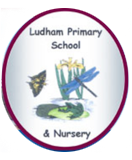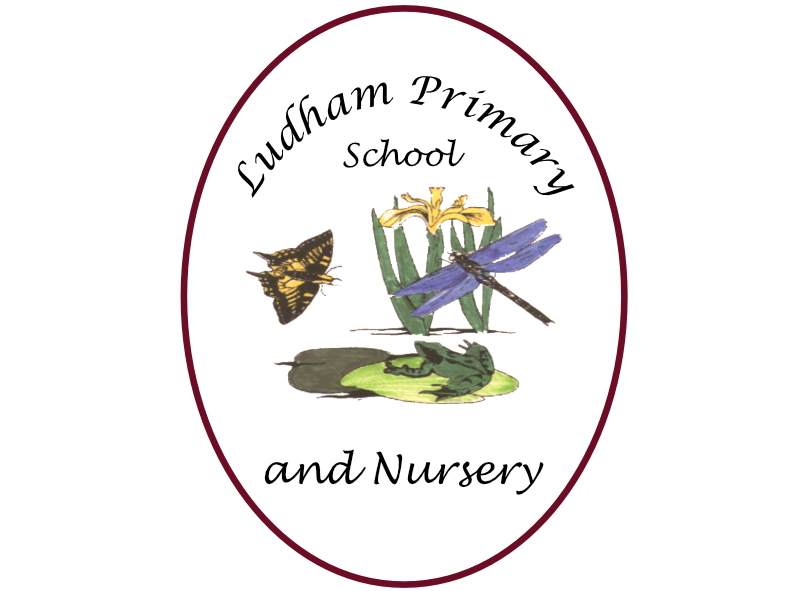Art and Design
INTENT
“Art and design stimulates creativity and imagination. It provides visual, tactile and sensory experiences and a unique way of understanding and responding to the world.”
At Ludham Primary School and Nursery, we propose to:
- Assist pupils in becoming visually literate.
- Develop powers of observation.
- Develop aesthetic sensibilities to make judgements about Art.
- Encourage the use of imagination and original thought.
- Provide opportunities to learn about the world in which we live.
- Develop the ability to communicate ideas, opinions and feelings about their own work and that of others.
- Encourage children to be able to respond knowledgeably to the work of other craftspeople, knowing that there are different kinds of art made for different purposes.
- Acquire a range of different skills using different media as the children progress through the school.
At Ludham Primary School and Nursery, we want our children to love art, craft and design! We want them to have no limits to what their ambitions are and to grow up wanting to be illustrators, graphic designers, fashion designers, curators, architects or printmakers. Our Art curriculum is designed to engage, inspire and challenge pupils, whilst equipping them with the knowledge and skills to be able to experiment, invent and create their own works of art. As pupils progress, they should gain a deeper understanding of how Art and Design reflects and shapes our history, and how it contributes to the culture, creativity and wealth of our world. We want to equip our children with not only the minimum statutory requirements of the Art and Design National Curriculum but to prepare them for the opportunities, responsibilities and experiences of later life. We want our children to use the local area as inspiration, to learn from other cultures and to respect diversity. To that end, we have carefully selected a wide range of unique and diverse artists, craft makers and designers for children to study.
Art and Design-IMPLEMENTATION
- At Ludham, Art is taught in every year group, once per week during the first half of each term.
- Every child has access to a knowledge organiser at the front of their sketchbooks. These knowledge organisers allow children to refer back to key vocabulary when needed. They also give children an insight towards what each module will be about.
- Each child has a sketchbook. We give the child ownership of their sketchbook in order to foster their sense of creativity. Children use their sketchbooks to make initial sketches, develop skills, record ideas and develop opinions.
- Throughout the Ludham journey, every child is given the opportunity to learn the skills of drawing, painting, printing, sculpture and digital art through the exploration of an initial key artist, craft maker or designer and their work
- Through in-depth discussion, the pupils explore how their art can share commonalities with famous art and use subject-specific vocabulary to discuss key artworks and their own work.
- In the development of confident art critics, the pupils share their opinions and make informed observations about what will improve their own practical work.
- Cross-curricular links are promoted to allow all children to deepen their understanding across the curriculum, including the use of technology, and artworks from year group specific historical, geographical and scientific contexts.
- Opportunities for children to visit local art galleries and museums are planned for, as well as visits from local artists.
- Teachers follow a clear progression of skills which ensures all pupils are challenged in line with their year group expectations and are given the opportunity to build on their prior knowledge.
- Opportunities to reflect and develop, including through the use of sketchbooks, and chances for self and peer-assessment are planned into each unit of study in KS1 and KS2.
- Effective CPD and standardisation opportunities are available to staff to ensure high levels of confidence and knowledge are maintained.
- To support teaching, staff access a range of resources and planning.
- Our assessments are used to inform future practice.
EYFS
Through Expressive Arts children are encouraged to explore different media, explore how media can be combined to create different effects and develop a range of skills and techniques experimenting with colour, design, texture, form and function. Children are given daily access to a range of creative opportunities and enjoy our carefully planned and well-resourced creative areas both indoors and out. Children are encouraged to create on both small and large scales and our outdoor environment supports this well. Children are encouraged to develop their communication and language skills through talking about their creations and sharing these with others to build confidence and raise self-esteem.
Art and Design IMPACT
The impact of this curriculum design will lead to outstanding progress over time across key stages relative to a child’s individual starting point and their progression of skills. Children will therefore be expected to leave Ludham reaching at least age-related expectations for Art and Design. Our Art and Design curriculum will also lead pupils to be enthusiastic Art and Design learners, evidenced in a range of ways, including pupil voice, their final pieces and sketchbooks. We ensure that children who are achieving well, as well as those who need additional support, are identified, and additional provision and strategies are planned in and discussed with class teachers. Achievements are celebrated in classrooms during walking-galleries and corridor displays, and by building in increasing connections with local galleries, we aim to develop our future artists and their appreciation of the art around them.
By the end of Year 6 - Endpoints
By the end of Year 6, Ludham children will be able to talk confidently about art using the correct art and design terminology. They will be able to critique art work, talking about artist choices, techniques and the medium used.
They will have acquired knowledge of a range of great artists, craft makers and designers, and understand the historical and cultural development of their art forms.
They will be able to produce creative work, exploring their ideas and recording their experiences in their own sketchbook. Children will become proficient in drawing, painting, sculpture and other art, craft and design techniques.
• Pupils will know the names of at least six great artists, architects and designers.
• Pupils will know and recognise a range of art movements and periods from history.
• Pupils will be able to critique, analyse and talk about art work, artists and art movements using specific and technical vocabulary.
• Pupils will know how to record their knowledge, thought processes, design and creativity in a sketchbook.
• Pupils will develop and refine their skills in a wide range of art & design techniques.
• Pupils will know how to use their skills to experiment, invent and create their own works of art & design.
• Pupils will experience a range of media including: watercolour, acrylic, pencils, soft pastels, oil pastels, chalk and charcoal, collage, junk modelling, clay, mod rock, textile, print making, digital art, photography and sculpture.
• Pupils will be able to appreciate, critique and be influenced by great works of art.
• Pupils in KS2 will develop their use of a scrapbook to record their ideas.
• Pupils will host a whole school art exhibition.
• Pupils will create artwork for a specific purpose/whole school exhibition at least once a year.
• Pupils will be given the opportunity to meet and work with real artists, craft makers, designers or architects, either in school or visiting their studio/workshops/place of work.
• Pupils will be given the opportunity to exhibit their work in school and the wider community.
The key assessment criteria for art have been devised in such a way that they can be applied to allow teachers to assess how well children are developing as artists.
Teachers at Ludham Primary School and Nursery may wish to supplement these key assessment criteria with other criteria if they feel that this adds value.
In devising the key assessment criteria, consideration has been made to what is age appropriate in line with the key stage programmes of study.
These have been tested and evaluated by class teachers. In presenting these criteria, there is no suggestion that this is the only ‘correct’ sequence; but rather a suggestion to help teachers plan and assess.
Knowledge Organisers

 Cycle B – Spring 1 – Marsh Harrier – Science
Cycle B – Spring 1 – Marsh Harrier – Science








